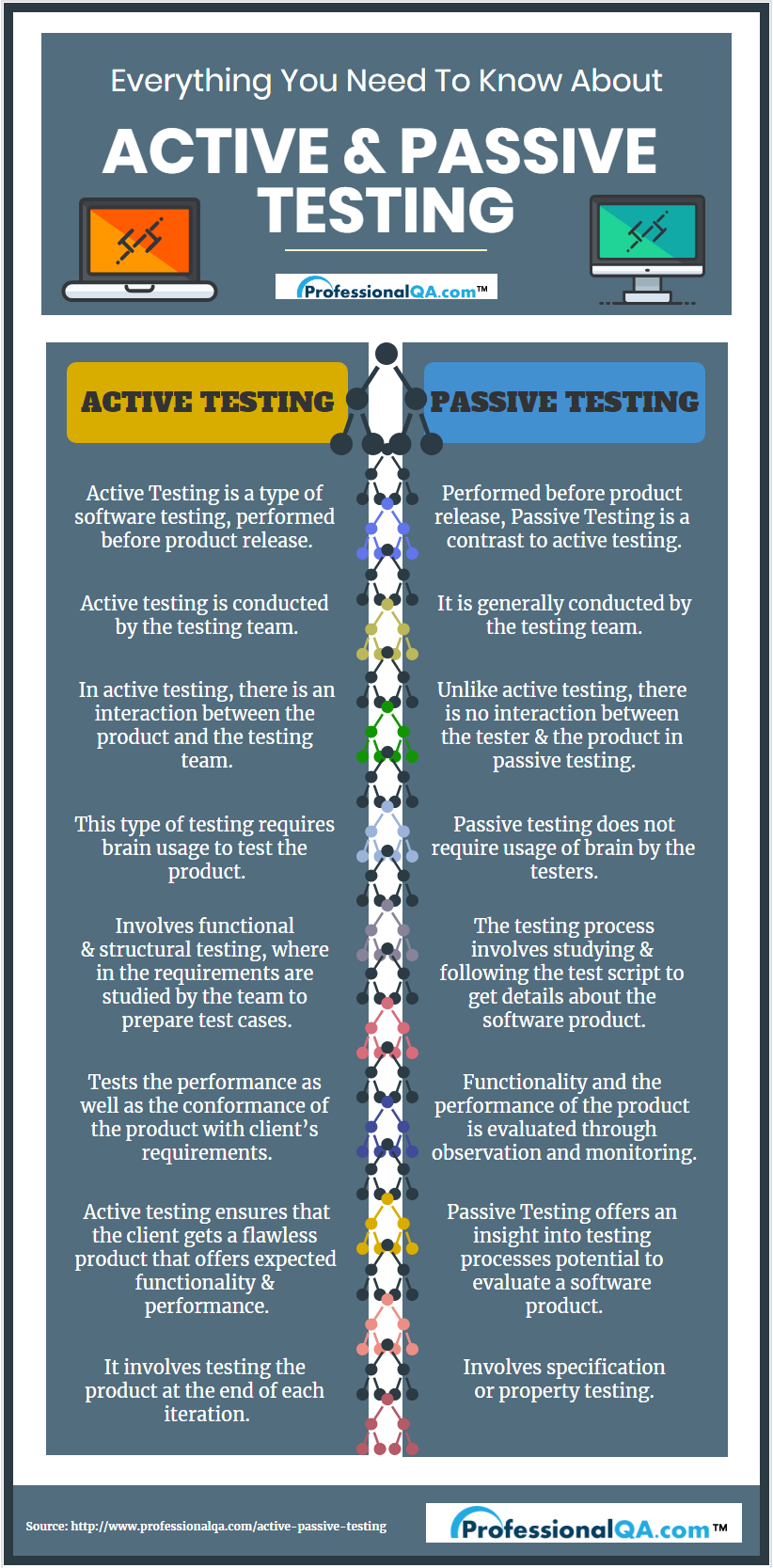

Nowadays, the process of software testing is performed in heterogeneous ways, wherein the testers may or may not indulge in the testing process directly, or their interaction with the software product is scant. Active testing, a vital testing technique is performed by the team to verify and validate various critical features and aspects of the software. Therefore, to help you comprehend the significance of active testing in Software Development Life Cycle (SDLC), here is a detailed discussion of the same.
A software testing process, where a tester interacts with the product and directly executes the process of testing, to examine the problems in the software, is called active testing.
Active testing is an integral part of any effective testing life cycle and generally involves testers directly interacting and testing the product to examine it. Moreover, during this process, the tester feeds the product with the test input data and analyzes the result.
While performing active testing, a tester creates a mental model of a software product, which gradually develops and is enhanced during the course of consistent interaction with the software.
Ever since its introduction in STLC, active testing has gained great importance among software testers and is performed after the completion of each iteration to validate their flawlessness. Other features of active testing are:
From verifying the quality and functionality of the software product, to ensuring its compliance with the client’s requirements, active testing plays an extremely significant role in software testing and is hence performed by testers worldwide. Other reasons for performing active testing are:
Since the significance of active testing is such in software development life cycle (SDLC), it becomes vital for us to implement its process accurately, which will assist us in getting correct and expected results. Hence, here are the steps followed during the process of active testing.
During active testing, there are two methods that are implemented by the team to test the software product and to validate their accuracy. These two methods of active testing are:
The significance of active testing is quite evident from the above discussion. However, it is also necessary for us to define the various advantages offered by active testing, that serve a critical role in making this testing popular. These advantages are:
Any discussion on active testing is incomplete without its comparison with passive testing, which is a contrast to the former. As the concept of active and passive testing is based on the similar fact of having interaction or no-interaction with a software product, in order to evaluate it, it makes this comparison even more important.

Therefore, to define their differences, here is a comparison between active and passive testing.
| Active Testing | Passive Testing |
| 1. Type of software testing performed before product release. | 1. Passive testing is a contrast to active testing and is performed before product release. |
| 2. Active testing is conducted by the testing team. | 2. It is generally conducted by the testing team. |
| 3. In active testing, there is an interaction between the product and the testing team. | 3. Unlike active testing, there is no interaction between the tester & the product in passive testing. |
| 4. This type of testing requires brain usage to test the product. | 4. Passive testing does not require usage of brain by the testers. |
| 5. Involves functional & structural testing, where in the requirements are studied by the team to prepare test cases. | 5. The testing process involves studying & following the test script to get details about the software product. |
| 6. Tests the performance as well as the conformance of the product with client’s requirements. | 6. Functionality and the performance of the product is evaluated through observation and monitoring. |
| 7. It helps resolve issues in the software product. | 7. It does not require test data to test the software product. |
| 8. It involves testing the product at the end of each iteration. | 8. Involves specification or property testing. |
| 9. It can be conducted manually as well as through automated tools. | 9. Can be performed manually or through automation, which saves time and efforts. |
| 10. Active testing ensures that the client gets a flawless product that delivers intended functionality and performance. | 10. It gives the insight into a testing processes potential to evaluate a software product. |
Active testing, therefore, plays an extremely important role in evaluating a software product and conforming its compliance with client’s requirements. It is one of those testing techniques, which might seem insignificant, but is an integral part of software testing process.
Advertisement: